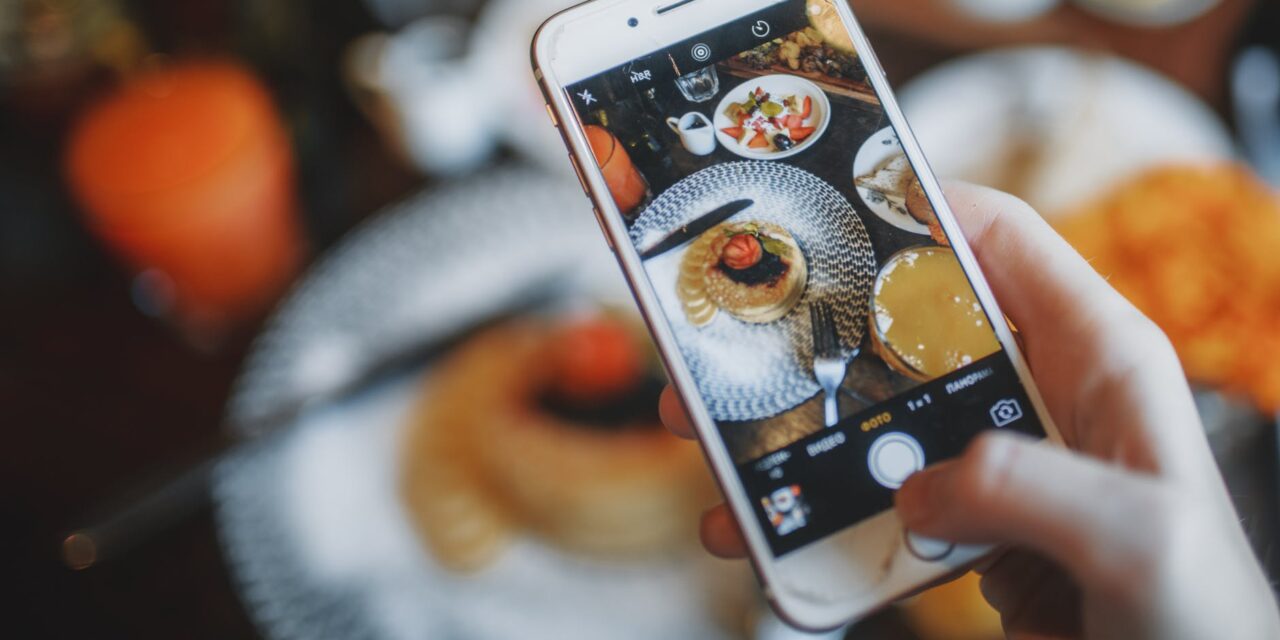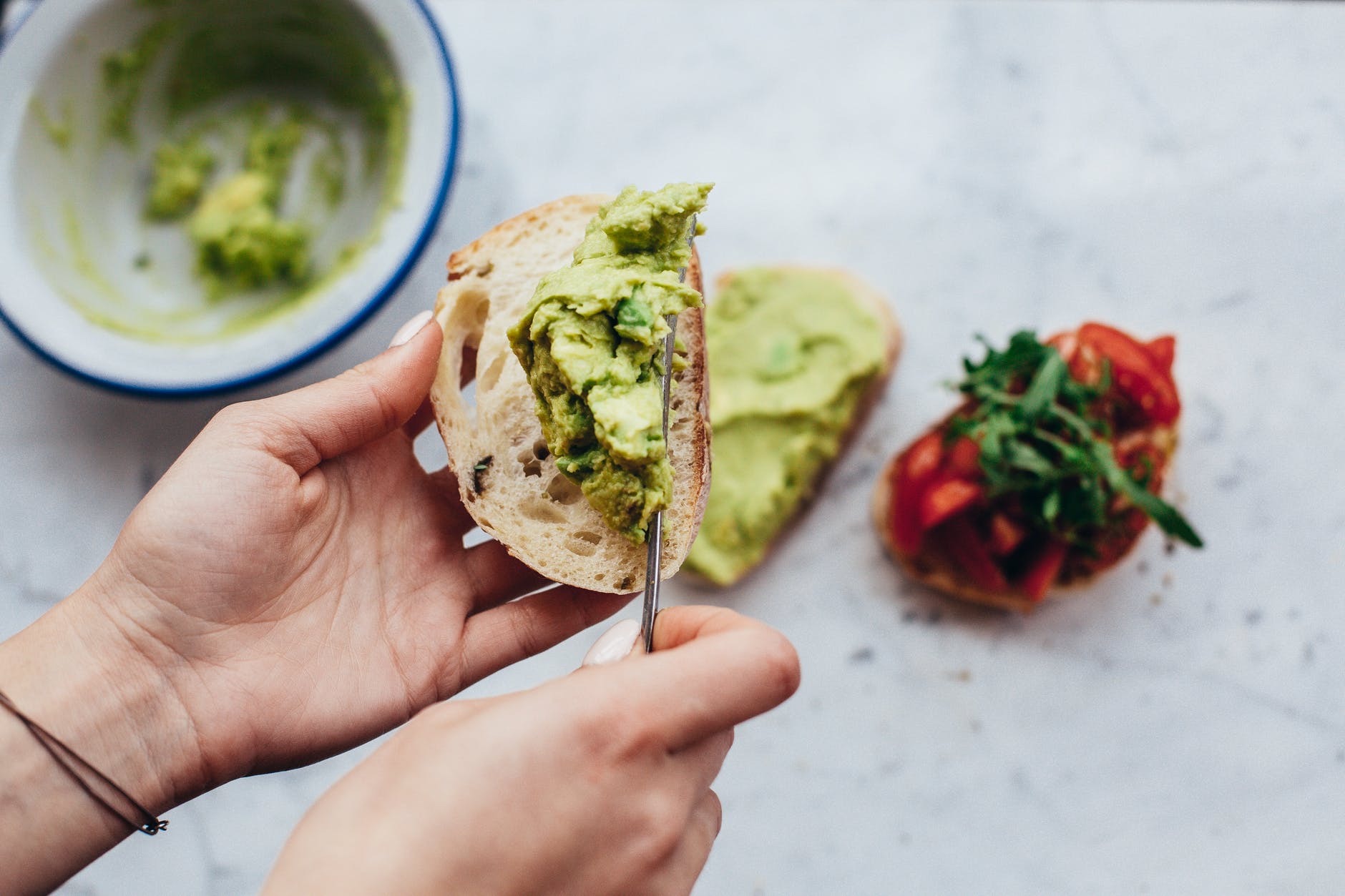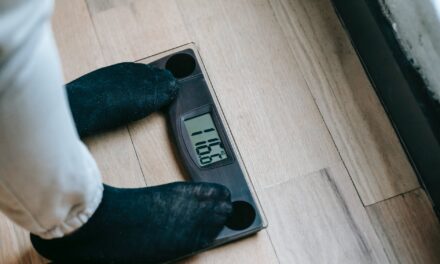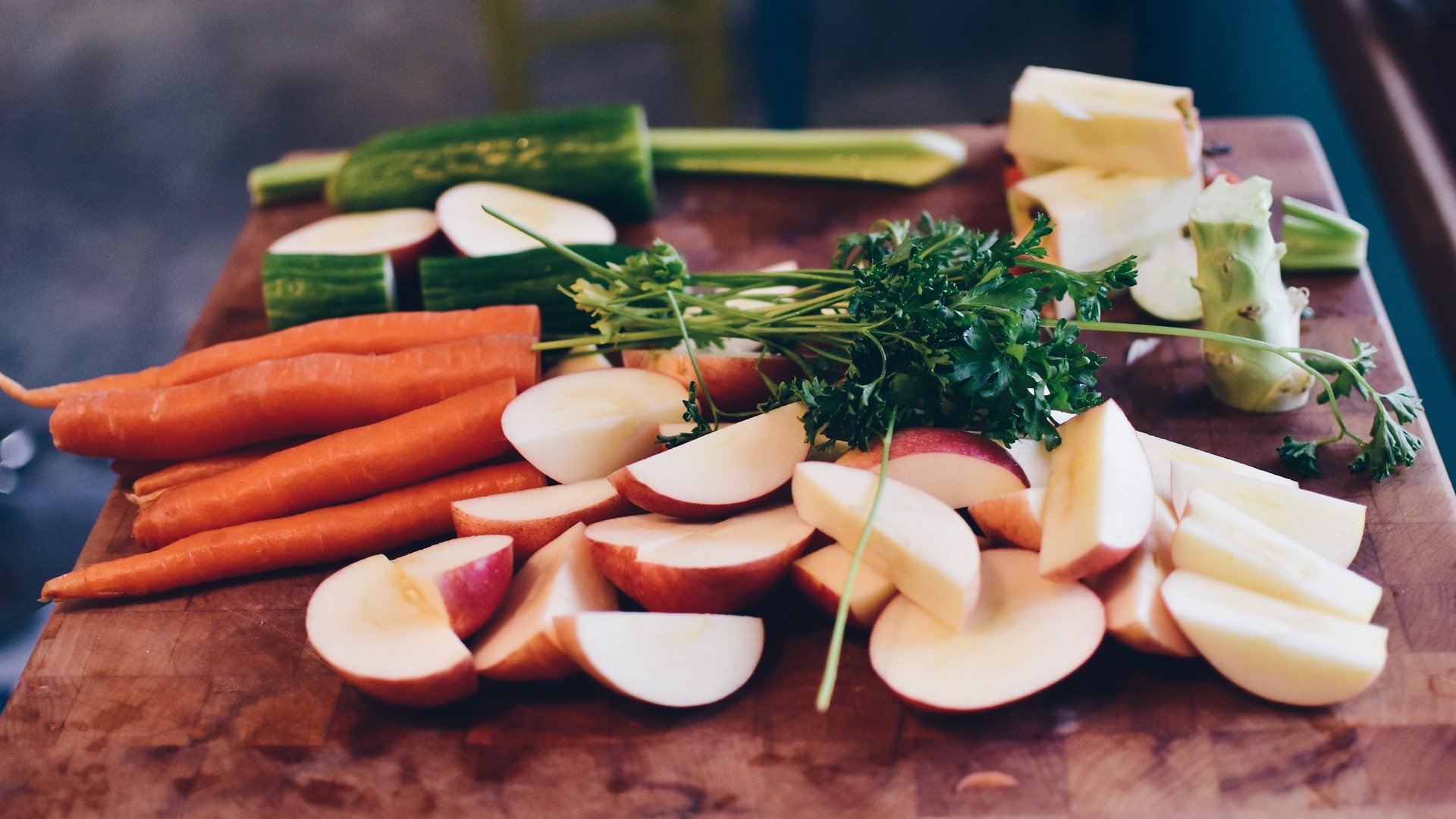I can’t stress this enough: it’s both normal AND expected to feel hesitant to “break up with” MyFitnessPal after having success with it.
This does NOT mean that your diet was unsuccessful or that there’s anything wrong with you. You simply experienced a positive feedback loop (“MFP” means MyFitnessPal):
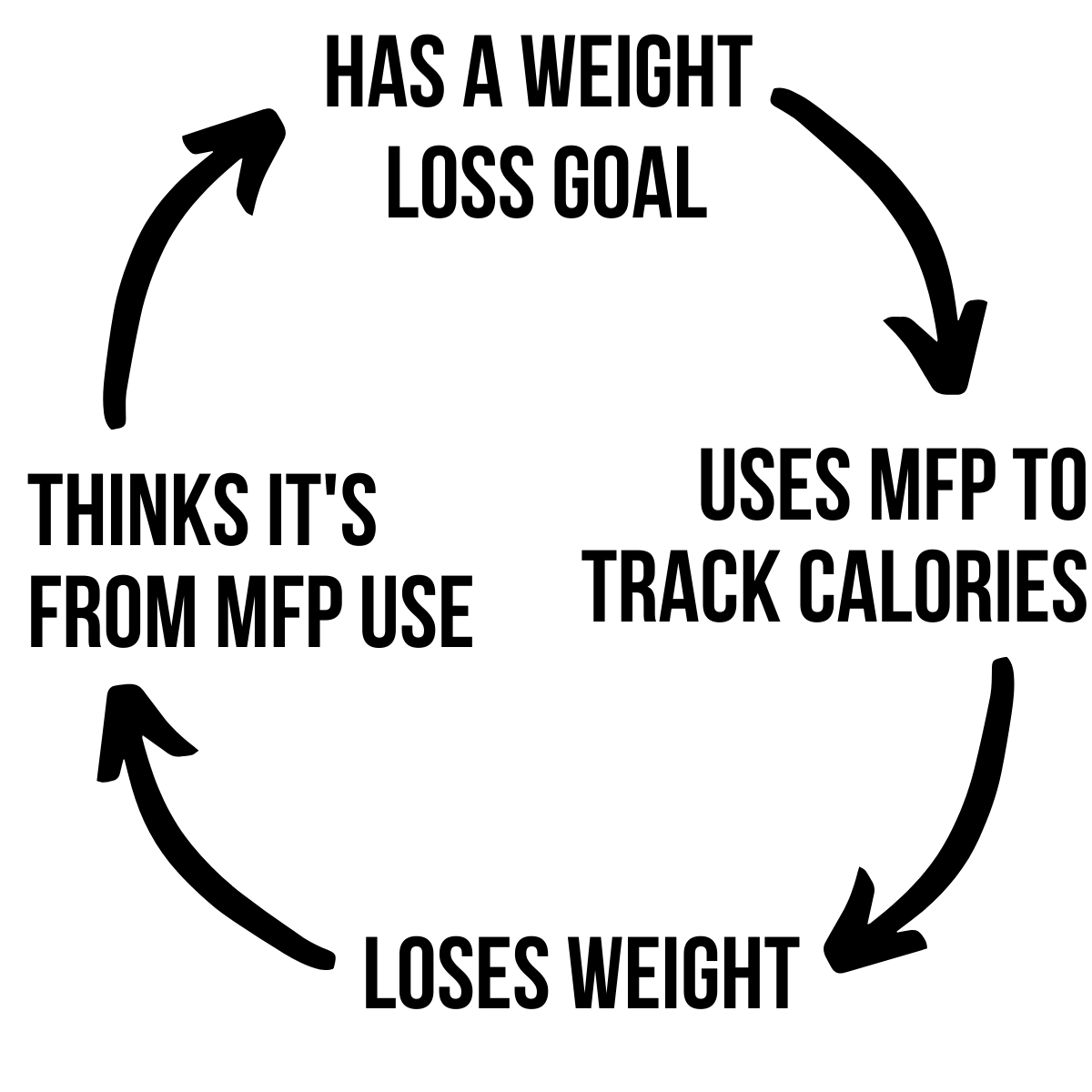
I say “thinks” (in the graph above) because this isn’t what actually happened. Here’s a more accurate loop:
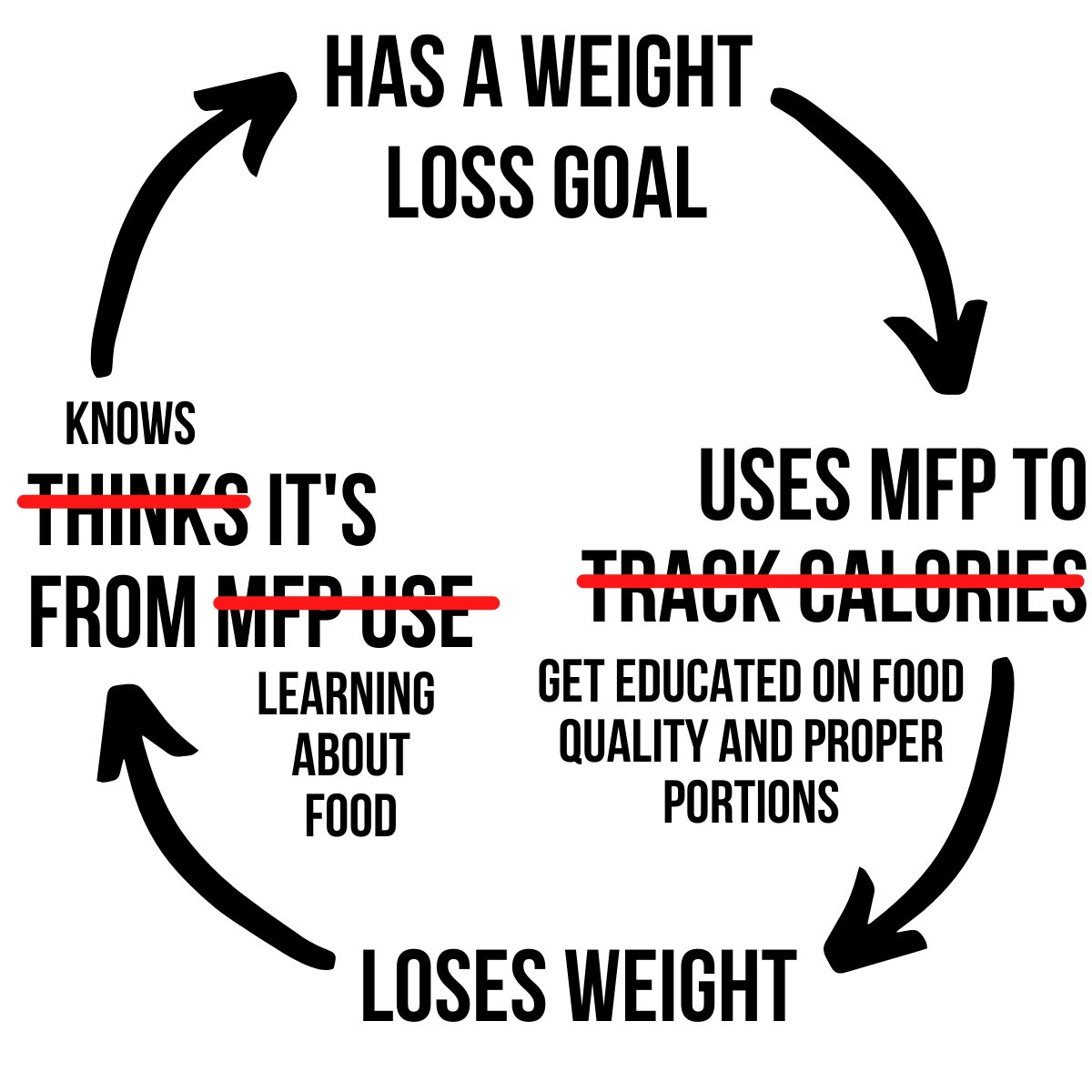
In any case: you will need to wean off MyFitnessPal (or alternative food tracking app) if you want to be successful long-term. Here’s why:
1) It’s not sustainable
There’s going to reach a point where the LAST thing you want to do is look up a menu in advance or guestimate the calories in MyFitnessPal (you’re likely at this point if you’re reading this). It’s simply not something you can (or should) do for a lifetime.
2) It can decrease mindfulness
I don’t subscribe to the school of thought that calorie counting is inherently mindless or encourages “bad” habits (as many anti-dieter influencers will tell you)—as there are several strategies you can use to practice mindfulness while tracking:
- Using a calorie range instead of a strict target (I have all my VIP Nutrition Coaching clients do this)
- NOT force-feeding yourself if you feel stuffed before reaching your calorie range
- Consciously choosing to exceed your calorie range if it adds to a social experience
But there still times where people track for so long that they feel a little lost without it (“How do I know when to stop eating? What if I undereat by accident?”).
3) It can foster dependence
Think back to that first feedback loop. Some people’s reinforcement gets SO strong that they resort to MyFitnessPal every time they feel themselves “spiraling”—as the app is their entire nutritional comfort zone and gives them a sense of control. But this worsens the problem and heightens a dependence on the app.
4) It’s not necessary
If you’ve been tracking diligently for 6-12+ months… you don’t need numerical feedback to know whether or not your decision-making is in line with your goals (especially if your goal is maintenance*). You know damn well a bagel with butter is not staple-worthy and that ordering an app and an entrée and a drink and dessert isn’t wise (at least not often).
*In the interest of total transparency: most people should still consider using the app—even if they’re highly experienced—if they haven’t reached their fat loss goal. It removes all the guesswork from making progress (like tracking expenses while in debt).
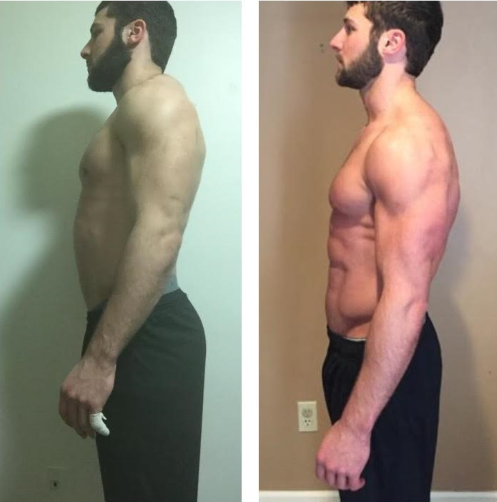
My buddy Matt is a great example of somebody who has success using MyFitnessPal in small doses (more on this soon)
There are a few other things you should know about weaning off MyFitnessPal:
1) Maintenance is a RANGE—not a specific number
People tend to freak the you-know-what out when they stop using the app and see the scale go up. But anywhere from 2-5 pounds over your “final” dieting weight IS maintenance and it’s nothing to react to. It’s just your body holding onto more water (it takes a fairly massive calorie surplus to gain a “real” 2-5 pounds)—nothing more.
And even if your weekly bodyweight averages go up more than 2-5 pounds over the course of a few weeks… you don’t need the app to make modifications to your approach! I’d bet my life savings you know where you’re gotten a little loose (ex. snacking or desserts).
2) You can return to the app from time to time (in very specific situations)
I don’t recommend doing so if (A) you do it every time the scale moves half an ounce or (B) you only use it when you have a fat loss goal—because the former is unnecessary and the latter is short-sighted. But you can certainly break out MyFitnessPal from time to time (long-term) IF:
- You’ve taken 9-12+ months off from dieting in any capacity
- You want to “tighten things up” OR make sure your macronutrient and micronutrient intake is in a good place for general health or performance
- You establish a predetermined and non-negotiable timeline for using it again (ex. 2-12 weeks)
- You don’t do this more than 1-2 times per year (if not less)
Again: it should NOT be something you do at the slightest sign of scale change or fat gain (which is normal). This heightens an unhealthy relationship with food tracking and diminishes your self-efficacy and independence.

My client Greg is another great example of somebody who has taken brief breaks from MyFitnessPal and still seen success
All factors considered… there IS a specific way to wean off MyFitnessPal when you’ve reached the goal you were using it for—and you won’t feel lost or risk losing progress if you use it. Here’s the exact process I recommend:
Proactive Step #1: Learn a proper plate structure
Many people (understandably) get really into the weeds of the “top end numbers” (ex. calories and macronutrients) when tracking and often fail to look under the surface a little bit more:
- Is there a lean protein and vegetable on 90+% of your plates?
- Are you having fruit as a side 2+ times per day?
- Are you generally increasing and decreasing carb portions based on activity levels*?
- Are you moderating fat portions (which has nine calories per gram and adds up very quickly)?
- BONUS: Are you minimizing snacking and liquid calories outside of your “main meals”?
*You don’t need to agonize over this—but a more active person might consider having “extra” carbs (ex. rice and potatoes and oats and quinoa) to support performance and recovery.
Focusing on these will allow you to have a general framework for solid nutrition when you’re no longer using an app to tell you how you’re doing. Here’s a helpful visual:
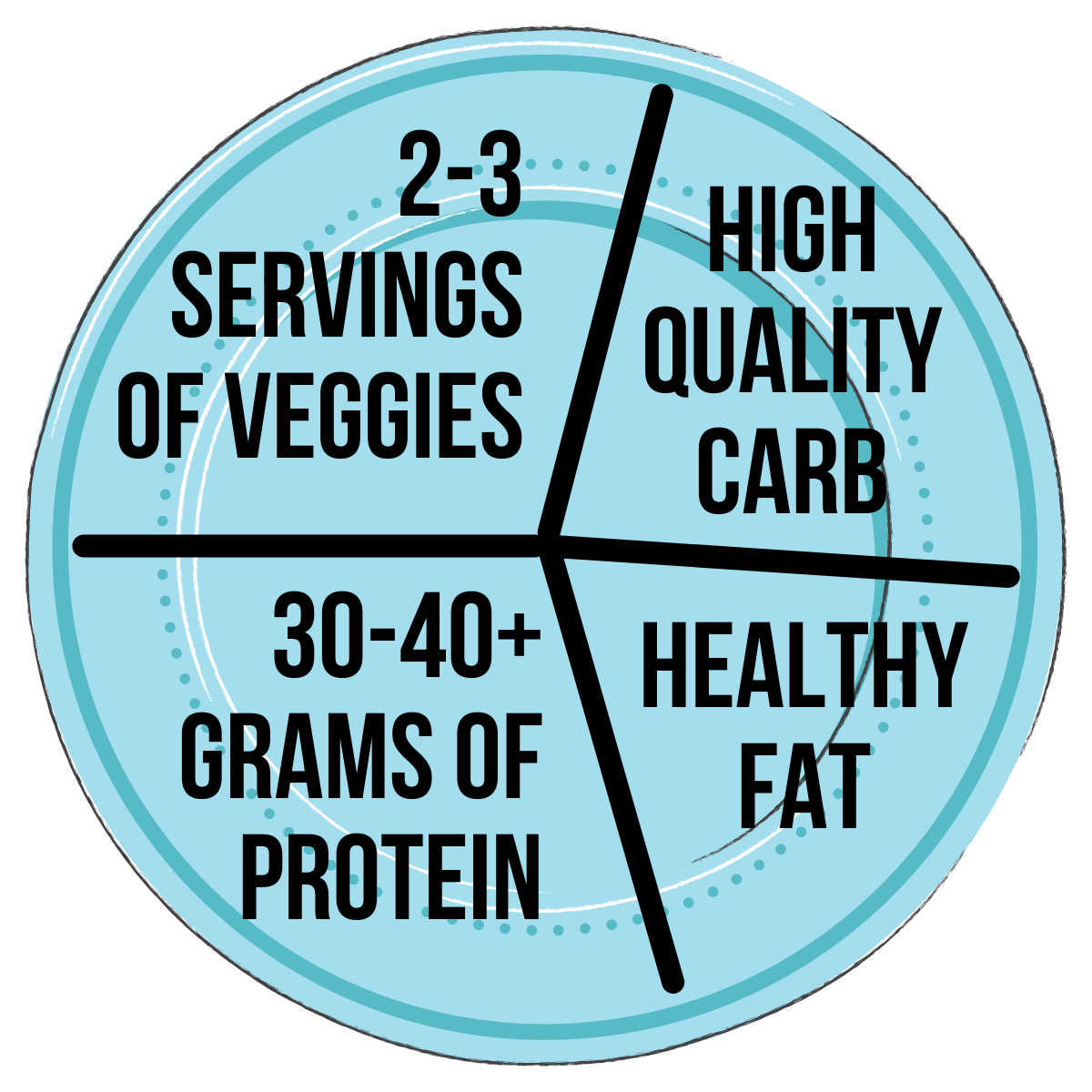
Here’s how this template could be used:
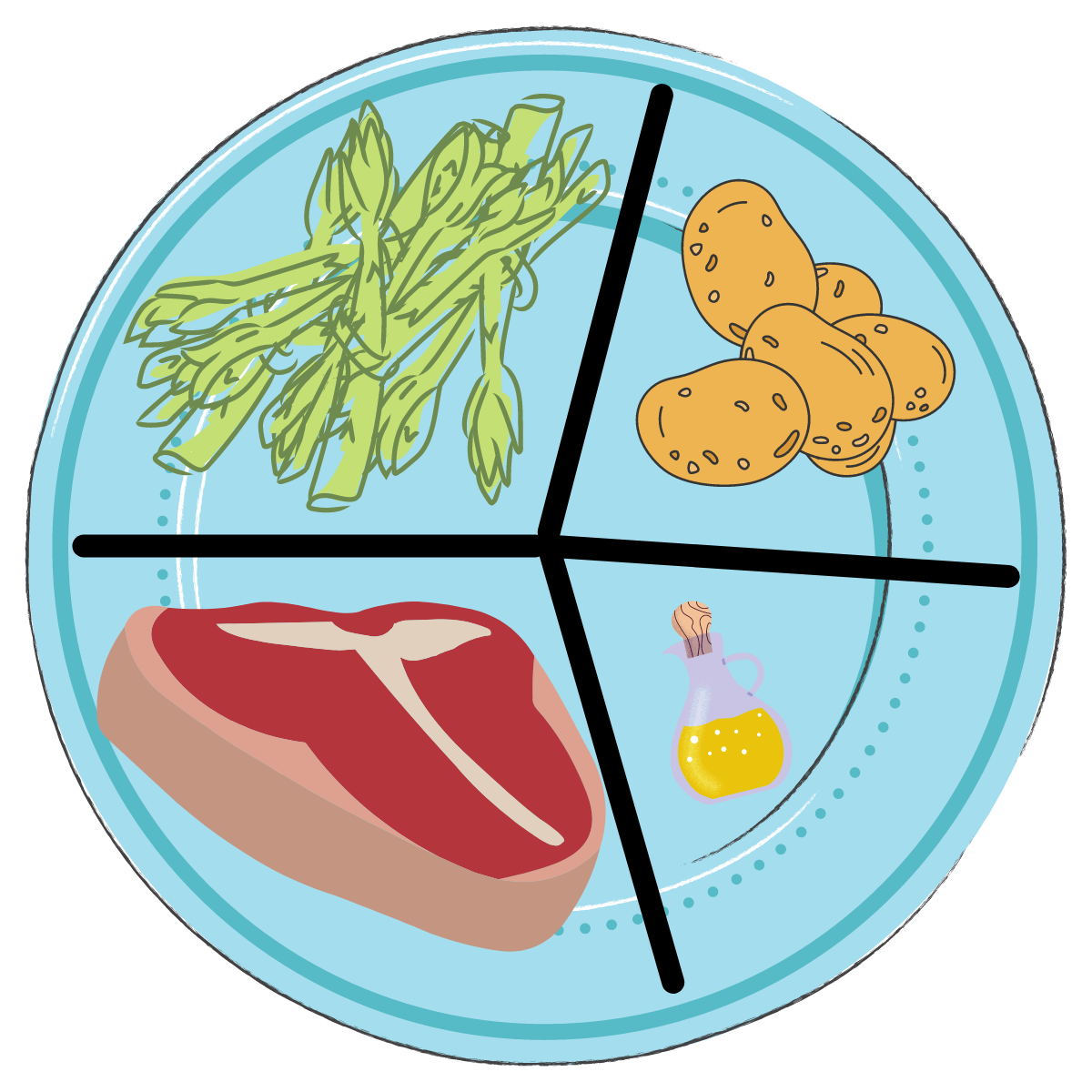
You’re looking at 8-12 ounces of steak (55-75 grams of PROTEIN and varying levels of fat) and roasted asparagus (VEGETABLES) and mini potatoes (CARB) that were cooked with olive oil (FAT)
But sometimes you need to think critically. Not all plates are that cut and dry (ex. an omelette):

You’ll get 30+ grams of PROTEIN from the hardboiled egg whites (as your side) and the eggs in the omelette (which also have FAT). You’ll get more fat and protein from a small portion of cheese. Your CARBS are the fruit side. Your VEGETABLES are the spinach and tomatoes in and around the omelette)
Proactive Step #2: Practice mindful eating more consciously
Although you can practice mindful eating while counting calories… few people do. Here’s how to be the exception and have it on your radar before weaning off MyFitnessPal:
- Ask yourself if you’re genuinely hungry before eating (or simply dehydrated or bored)
- Ask yourself how “future you” will feel about the decision you’re about to make
- Don’t eat distracted (in front of a screen OR while driving or walking around)
- Sip water throughout the meal
- Put your utensil(s) down between bites
- Ask yourself how you’re feeling throughout the meal (ex. satiated or stuffed)
- Consider ending the meal before your plate is empty
- Briefly assess—NOT agonize over—your decisions after the meal and (whether they support your long-term goals)
This is the exact framework my clients use to begin transitioning away from MyFitnessPal while increasing mindfulness.
Here’s what to do after you’ve practiced proper plate structures and eaten more mindfully:
Step #3: Take a partial plunge
Your single best “starter step” is deleting the app from your phone from Monday to Thursday. This is when most people don’t have too much trouble eating well or making reasonably healthy choices—so it won’t be overly challenging or intimidating.
Here are the simple metrics I recommend turning to instead of numerical feedback:
- Did I have 3-4 clear cut “main meals” per day?
- Did each of these meals have a balanced plate structure?
- Did I sit and eat mindfully during each of these meals?
- Did I eat 2-3+ lean proteins AND fruits AND vegetables by day’s end?
- Did I minimize snacking and liquid calories?
If so: you’re crushing it.
Step #4: Delete the app altogether
Ready for the fun part?
The last step is to delete the app altogether. It doesn’t matter if you have a streak. It doesn’t matter if you “only want it as a reference.” It doesn’t matter if you’ve lost a billion pounds with it. You will be 100% fine and capable of doing well without it.
Here’s how:
- Commit to 6-9+ months without using the app at all. This CANNOT be negotiable
- Continue to prioritize the metrics in Steps #1 and #2 (ex. proper plate structure and mindful eating)
- Do NOT enter the weekends plan-less. Have some food prepped and learn how to navigate menus and make good choices (more on this in the video below)
- Continue to keep snacking to a minimum (it wreaks havoc on weight loss AND management goals)
- Generally avoid splurging 2+ times in one day (the Token Method is really helpful for this)
Here’s a video on how to make good choices on ANY menu:
Let’s recap everything we went over today:
- It’s normal and expected to feel drawn to MyFitnessPal after having success with it—but you NEED to wean off it if you want to be successful long-term. This forces you to be more mindful and use the knowledge you’ve acquired (rather than relying on numerical feedback so heavily)
- When you do wean off it: a 2-5 pound increase on the scale IS maintenance and reflects water fluctuations. You don’t need to break out the app again (it’s counterproductive to)
- I recommend prioritizing proper plate structures and mindful eating strategies (ex. stopping when satisfied) BEFORE weaning off the app (so you don’t feel lost when you do)
- The first step to weaning off it is deleting the app early in the week (when you’re most likely to make good food choices). You can use alternative metrics of success (ex. X number of protein sources and Y number of fruits and vegetables) during this trial period
- You’ll eventually want to delete the app altogether and commit to NOT dieting or using it for 6-9+ months—at which point you can occasionally break it out for brief stints to “tighten things up” or check on nutritional intake (although this isn’t necessary)
I know this is a lot to digest—so please don’t hesitate to shoot me an email if you have any follow-up questions or still feel unsure of anything MyFitnessPal-related.
I’ve also written entire articles on how to get the most out of the app when you’re dieting AND how to minimize time spent dieting in the first place.
Let me leave you with this:
You’re MORE than capable of eating well and making good choices without an app’s help. You know exactly when and how you’re “pushing the limits” (relative to your goals) and don’t need numerical feedback to solidify that.
So trust in your knowledge and eating skills and give yourself a real chance to be successful without “extra” help. I’m 100% confident you’ll be able to if you operate with an ounce of patience and (faith in the knowledge you’ve accumulated).

